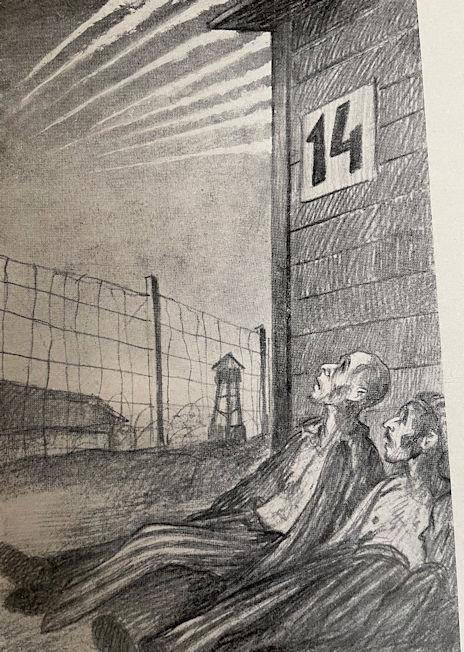Hungarian-born writer, editor, and illustrator Ervin Abadi (or Abádi) stands alone among those rescued from the train, and not just because his name was first on the passenger manifest (alphabetical by last name).
As a young man, Erwin Abadi (1918-1979) studied at the College of Applied Arts in Budapest and from there won a scholarship to study further in Rome. His talents for illustration landed him a job in the publishing world as a graphic designer and book illustrator.
Ervin Abadi self-portrait, Late 1940s.

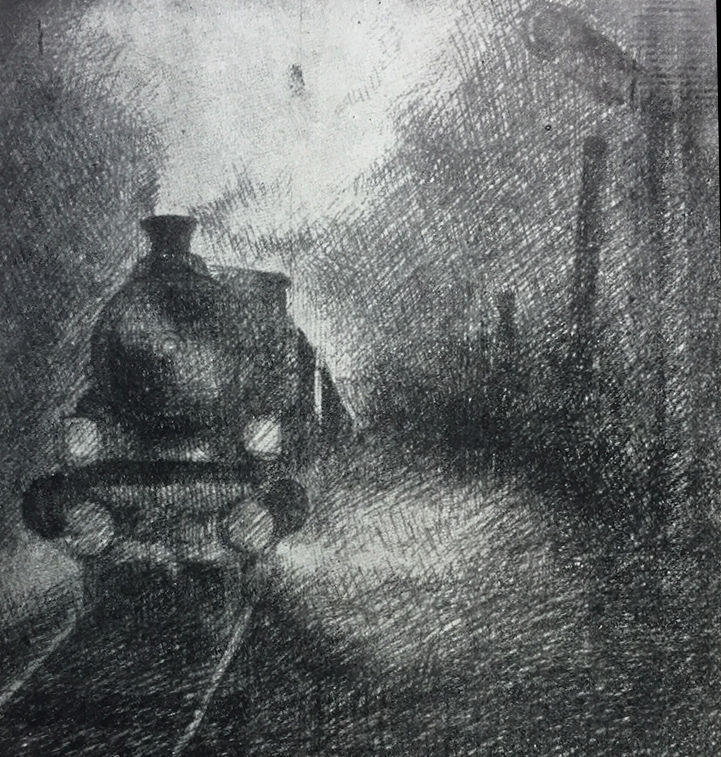
Today his daughter — Aviva Hartmann — welcomed us into her home, and made the event into a reunion. Her brother Gabi Abadi joined her for the video interview, and many other family members were there as well.
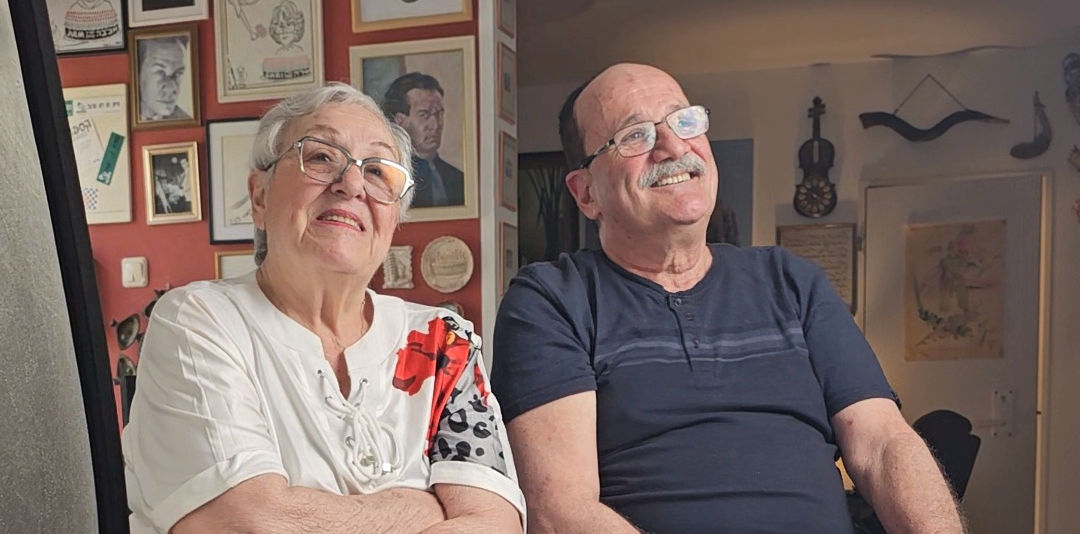
If it seems surprising that these people are smiling happily as they talk about their father — who suffered so much and so deeply in his young life — that is the way Ervin Abadi wanted it.
“He was a man full of joy,” Gabi told us, “and he always wanted ours to be a happy home.”
So it’s not surprising that they did not grow up hearing stories about his travails in the early 1940s. He wrote and drew about them but he did not dwell on them.
“He was glad to be alive,” Aviva said, “And he wanted us to be glad too.”
Ervin was more interested in being a loving father and enjoying his time with his family. One result of that spirit is this unique pair of photographs: the first, taken decades ago, shows Ervin drawing his baby granddaughter — and the second one, taken by me on April 22, 2023, shows the finished drawing being proudly held by that granddaughter, the vivacious Galia Hartmann. I believe this is the only photo anywhere of an Abadi work being held by the subject of the drawing!

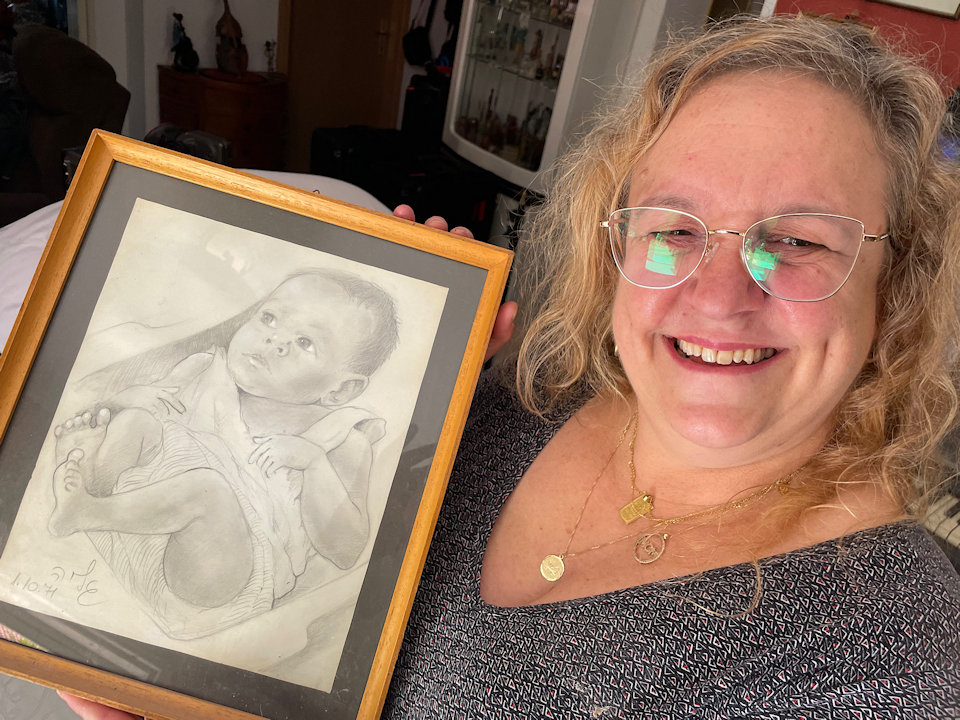
 The occasion also welcomed Dr. Naomi Vilko and her husband Sid (not seen in this photo). I don’t remember what Galia was telling Naomi about here, but I know it was interesting! Meanwhile Mike and Joe set up the shot while Matt went over his notes for the interview.
The occasion also welcomed Dr. Naomi Vilko and her husband Sid (not seen in this photo). I don’t remember what Galia was telling Naomi about here, but I know it was interesting! Meanwhile Mike and Joe set up the shot while Matt went over his notes for the interview.
You may remember that when I wrote about Ellen Haber I said we’d soon talk about Naomi, and now the moment has come. The story of Naomi and Ellen could be a film of its own; they found each other through a 23andMe genetic search, neither having known before they had such a relative.
But Naomi had always known about Ervin Abadi … or at least, that she had a relative who was a famous artist.
“I did not know his name,” Naomi recalls. “I knew that he was a talented artist & writer whose mother — Bella Stahl Abadi Heveshi — my aunt Bella– was a playwright in Budapest.”
But between her own researches, discovering her connection to Ellen Haber, and Matthew Rozell’s investigations, now she knows the truth: her father was Ervin Abadi’s uncle. “Ellen, Aviva, and Gabe are all my first cousins once removed; the closest relatives I have.”
We’re glad they found each other — Naomi and Ellen are tireless champions of this film project and we are endlessly grateful to both of them.
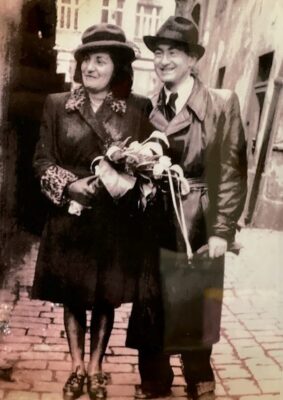
It’s no wonder so much of the family history had gotten lost or confused. Naomi’s family had been through the literal hell of the death camps.
“My parents both had tattoos from Auschwitz. They came to the U.S. having lost their families, homes, country, wealth, status, language, and culture. They spoke about their experiences among their friends and relatives but mostly looked towards the future.”
 Despite the horrors he had endured (slave labor and five death marches) he did not want Naomi to be sad or to ever feel hopeless.
Despite the horrors he had endured (slave labor and five death marches) he did not want Naomi to be sad or to ever feel hopeless.
So the life-embracing attitude of the Abadis seems to be a trait of the larger family.
“The only photos I have show him completely healthy and happy,” she says.
But his suffering as a prisoner and as a refugee took a toll: he died in his sleep when he was only 53 years old.
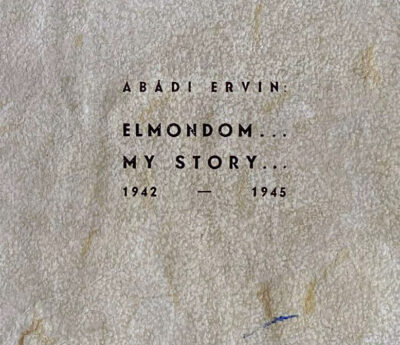
 Naomi is a passionate advocate for Ervin Abadi’s work.
Naomi is a passionate advocate for Ervin Abadi’s work.
“Ervin’s books & drawings are the closest thing I have to experiencing what my dad, his uncle, went through,” she explains.
She produced a handsome limited-edition reproduction volume of “Elmondom …My Story,” his 1947 self-illustrated memoir, originally published in Hungary.
And now, at the time I write this, she is at work on a second restoration: a facsimile edition of the similar book he called “Yesterday.”
She stays in touch with the members of the Abadi family who are in Budapest — where more Abadi works are being discovered all the time.
To me, the most intriguing illustration in “Yesterday” (Naomi let me take a sneak peek at the original!) is this drawing of the moment of liberation from the train. I believe it is a “second draft” of the much-better-known drawing, the one that is now at the United States Holocaust Memorial Museum.
In the second drawing one he’s reframed the action so the point of view is higher. This makes it look less like the gun is pointing at the people, which it certainly was not in real life. The result is that he has more space and light to emphasize the faces and clothes of the prisoners. 
The second version also has the soldier in the tank half-out of the hatch, like he’s jumped up in astonishment.
Also, if you know the full story of the train and you’ve studied the photos, you can tell that in the first drawing Abadi has the prisoners in front of one of the few passenger cars. In the second version he depicts them standing by one of the many freight cars.
As someone who used to illustrate Bible stories for young people, I was delighted to see some of Ervin Abadi’s post-war books in which he drew exactly the same scenes I had done many times. (His depictions are much better than mine in every way, but I still enjoyed feeling a kinship…)
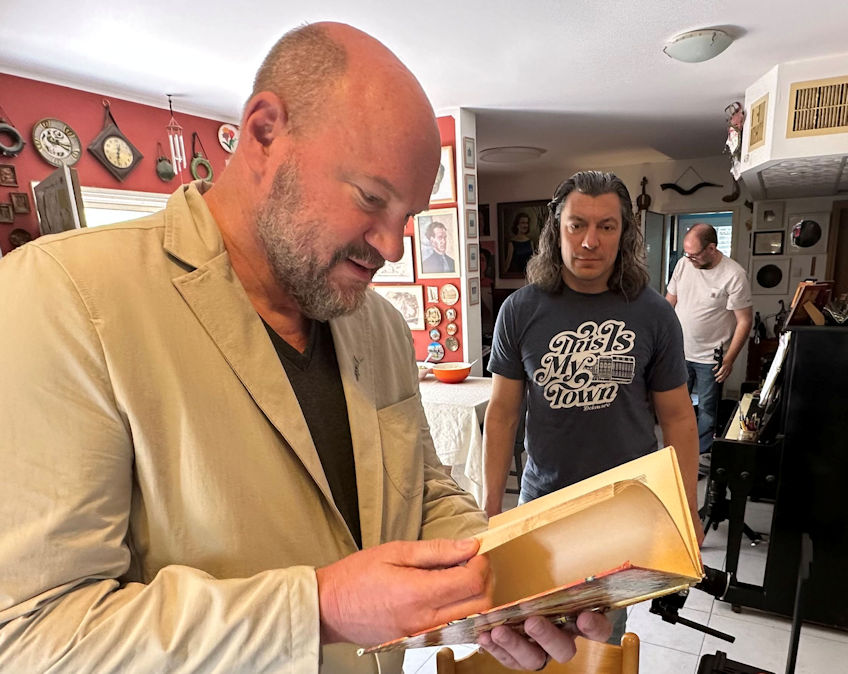
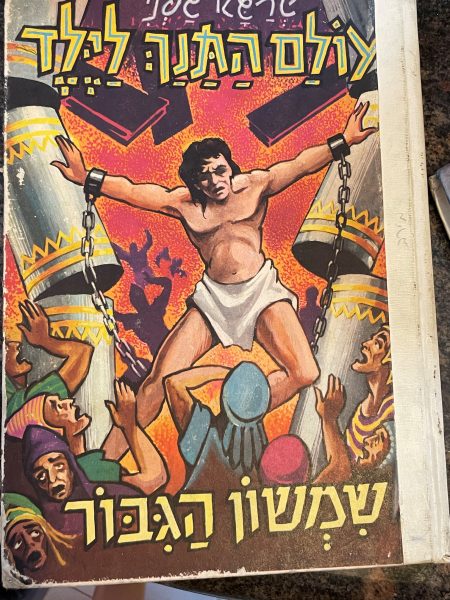
A study in contrasts:
Galia Hartmann and her father, the talented musician Yossi Hartmann, sharing a laugh typical of the happy Abadi home…

… and a drawing by Ervin Abadi recalling the moment when he and another half-starved prisoner looked up, puzzled, at the Bergen-Belsen concentration camp to see American planes soaring overhead… wondering: did the Americans know they were there? Are they coming back? Will we be alive when they do?
